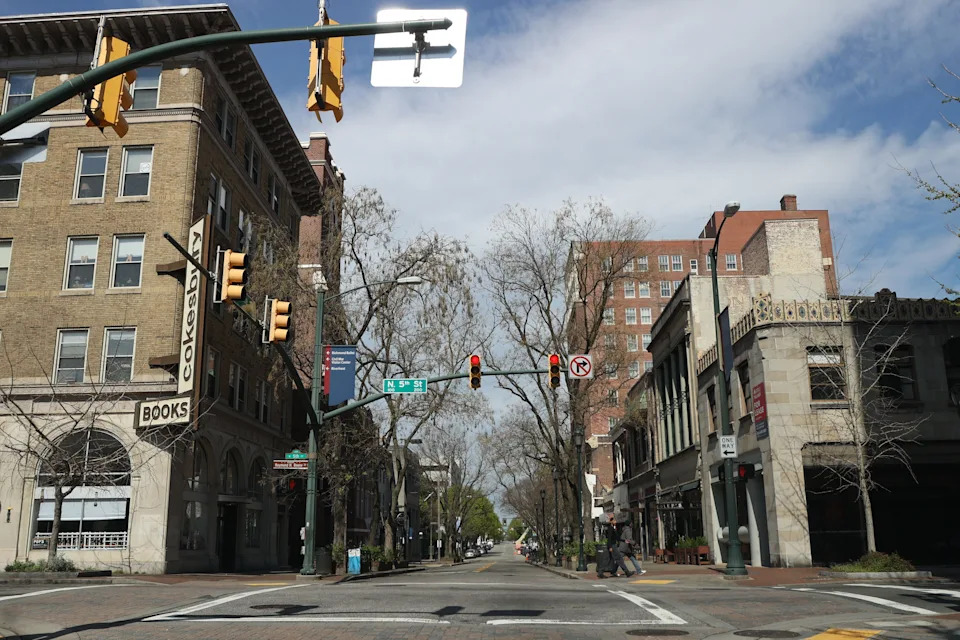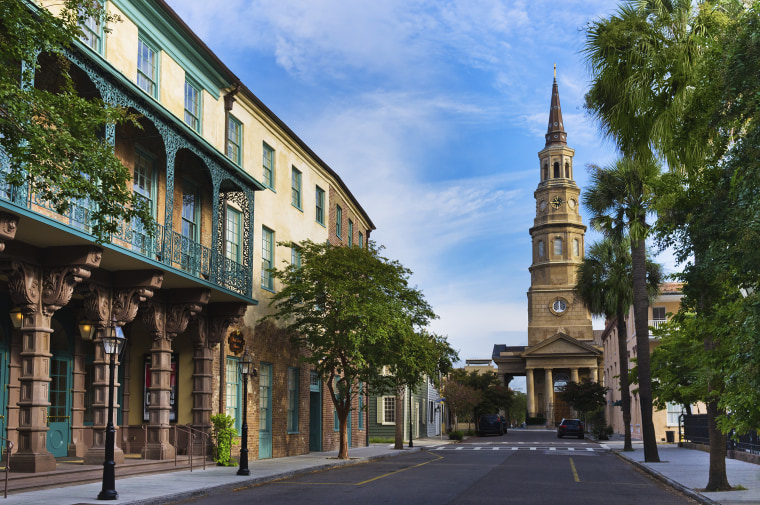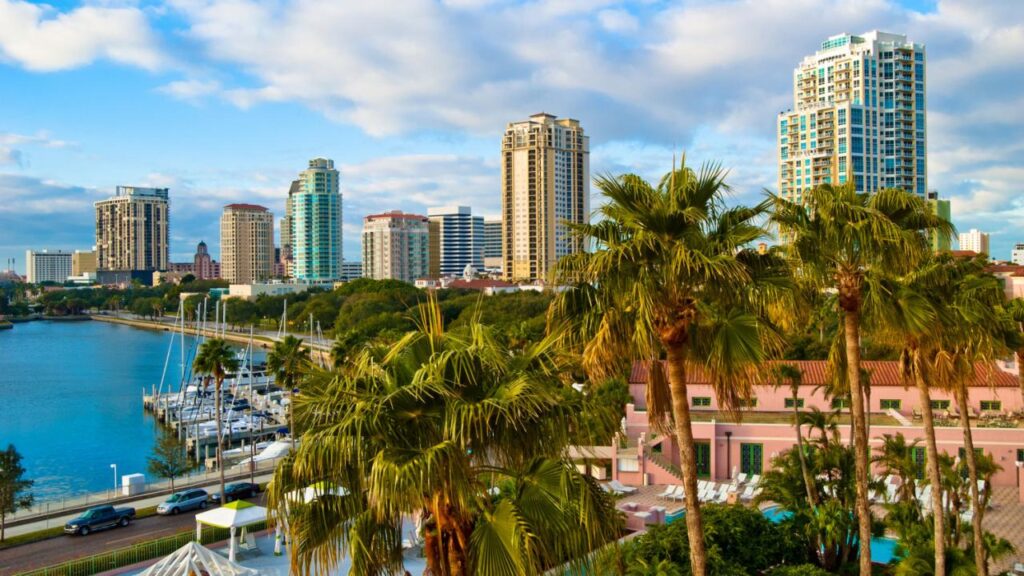The global travel landscape is undergoing a profound and fascinating transformation. For decades, the collective imagination of travelers was captured almost exclusively by monumental, sprawling mega-cities—New York, London, Paris, Tokyo, and Rome.
These urban titans, with their globally recognized landmarks and endless streams of tourists, dominated travel itineraries and media coverage.
However, a significant shift is now well underway, marked by the ascendance of the mid-sized city.
These destinations, often overlooked or previously relegated to day-trip status, are rapidly emerging as the new, dynamic hotspots, offering a compelling blend of affordability, authenticity, and accessibility that the over-saturated major hubs can no longer match.
This extensive exploration delves into the multi-faceted reasons behind this seismic change in traveler preference.
We will analyze the socio-economic factors driving this trend, the inherent advantages mid-sized cities possess, the impact on local communities, and the essential considerations for sustainable tourism development as these hidden gems transition into global draws.
Understanding this pivot is not merely about tracking statistics; it is about grasping the evolution of the modern traveler’s psyche—a growing desire for genuine connection, a rejection of tourist-trap commercialism, and a commitment to more responsible and enriching forms of exploration.
The Catalysts Behind the Urban Travel Shift
The migration of interest away from the traditional, overcrowded behemoths is not arbitrary; it is a logical response to systemic issues within the mass tourism industry, coupled with changing demographics and values among global travelers.
The confluence of these factors has created a perfect environment for the smaller, less-advertised urban centers to thrive.
A. The Saturation Point and the Rejection of Overtourism
The concept of “overtourism” has evolved from a theoretical concern into a tangible crisis in many major urban centers.
Cities like Venice, Barcelona, and Amsterdam have struggled publicly and politically to cope with the sheer volume of visitors, leading to degraded resident quality of life, infrastructural strain, and a dilution of the very cultural heritage visitors seek.
For the conscientious traveler, a trip dominated by endless queues, inflated prices, and elbow-to-elbow shuffling no longer represents value or relaxation.
Mid-sized cities, by definition, rarely suffer from this level of saturation. They offer a more manageable, less stressful environment where the ratio of residents to visitors remains healthy, allowing for genuine interaction and a truer sense of place.
The quiet, effortless experience of a mid-sized city street, compared to the sensory overload of a major capital, is becoming a primary selling point.
B. The Deepening Quest for Authentic Experiences
Modern travelers, especially Millennials and Generation Z, are less interested in simply documenting a famous landmark and more focused on immersing themselves in the local lifestyle.
This generation views travel as an educational, transformative experience, not just a photo opportunity.
Mid-sized cities naturally facilitate this authenticity. Their smaller, more cohesive downtown cores mean that local businesses, independent restaurants, and neighborhood markets form the cultural backbone, rather than being pushed out by international chains and global luxury brands that populate major capitals.
In these smaller locales, the local vernacular, the regional cuisine, and the unique historical narratives are more palpable and accessible.
A traveler is more likely to stumble upon a hidden, multi-generational pasticceria or an artisan workshop run by a local family than they are in an area dominated by chain coffee shops and souvenir stores.
This depth of experience commands a premium in the minds of today’s discerning traveler.
C. Compelling Affordability and Enhanced Value Proposition
In an era of economic uncertainty, the financial calculus of travel is more scrutinized than ever. Major global cities are notoriously expensive, with accommodation, dining, and transportation costs often inflating far beyond average wages. Mid-sized cities present a superior value proposition across nearly every category:
A. Accommodation
Hotel rates, short-term rental prices, and long-term stays (crucial for digital nomads) are significantly lower.
This affordability allows travelers to extend their trip duration or allocate more funds toward experiences like tours and fine dining.
B. Gastronomy
While major cities may host high-profile Michelin-starred venues, mid-sized cities boast incredibly rich, locally-sourced food scenes where quality often meets moderate pricing.
The cost of a full, three-course meal in a local establishment can be less than a single entree in a major capital’s tourist district.
C. Local Transport
These cities are often walkable, minimizing the need for expensive public transport passes or ride-shares.
When transportation is needed, the local system is typically simpler, cheaper, and less congested.
This financial feasibility makes mid-sized cities especially attractive to budget-conscious travelers, families, and those seeking extended stays to truly unpack the local culture.
D. Infrastructure Maturation and Seamless Connectivity
It is a common misconception that mid-sized cities lack the necessary infrastructure for international visitors.
The reality is that decades of focused regional investment, often spurred by government decentralization and economic diversification efforts, have led to substantial improvements in connectivity and services.
This maturation manifests in several ways, often making travel easier than in a mega-city:
A. Aviation and Rail Links
Many mid-sized cities now host efficient international or regional airports, often served by low-cost carriers, bypassing the chronic delays and congestion of major hub airports.
Furthermore, high-speed rail networks have made regional travel between these secondary cities seamless.
B. Digital Infrastructure
Robust 5G networks and ubiquitous, high-speed Wi-Fi are now standard, catering to the critical needs of the digital nomad and the hyper-connected modern tourist.
C. Hospitality Sector
The rise of boutique and locally-owned accommodations, adhering to global standards while retaining local character, provides attractive alternatives to generic chain hotels.
 The Definitive Mid-Sized City Experience
The Definitive Mid-Sized City Experience
The intrinsic characteristics of mid-sized cities create a travel environment that caters directly to the contemporary appetite for depth, ease, and local immersion.
A. A Cultural Scene That is Intimate, Not Overwhelming
While major capitals boast world-class museums, the sheer size and scope can be overwhelming.
The cultural offerings in a mid-sized city are often more manageable and curated.
The city’s history is typically concentrated in a central, easily navigable area, allowing a traveler to gain a comprehensive understanding of the locale in a few days, rather than a frantic, week-long dash.
The performing arts, local galleries, and specialized museums often focus specifically on the region’s unique heritage—be it industrial history, unique folklore, or a specific artistic movement.
This creates a distinct cultural profile, unlike the homogenized global art offerings often found in major cities.
Crucially, these cultural sites are visited more by locals than by tourists, enhancing the cultural integrity of the experience.
B. Culinary Excellence Rooted in Terroir
The global gastronomic revolution is moving towards regional specificity and ingredient provenance. Mid-sized cities are the epicenter of this movement.
They are often geographically closer to agricultural heartlands, fishing ports, or wine regions, meaning the local cuisine is a direct and pure expression of the surrounding terroir.
A. Farm-to-Table, Naturally
In many cases, the farm-to-table movement is not a trendy concept but a simple, generational reality.
Chefs and market vendors are often personally acquainted with the producers, leading to higher quality, seasonal ingredients, and a richer, more profound dining experience.
B. Local Legends
Mid-sized cities are the birthplace of many national dishes and regional specialties that are poorly imitated elsewhere.
Dedicated travelers seek out these original, authentic recipes, often found in small, unassuming restaurants that have been operating for decades.
C. Ease of Navigation and the “Low-Stress” Factor
The stress associated with navigating a major capital—deciphering complex metro maps, dealing with rush hour crowds, and managing language barriers in fast-paced environments—can detract significantly from a vacation.
Mid-sized cities offer a low-stress travel profile:
A. Simplified Layouts
Most feature clear, historical cores that are highly walkable, reducing dependence on transport and allowing for serendipitous discovery.
B. Time Efficiency
The reduced transit time between attractions, restaurants, and accommodation means travelers spend less time commuting and more time enjoying.
A 20-minute walk replaces an hour-long subway journey, fundamentally changing the flow of the day.
C. Community Feel
The smaller scale fosters a stronger sense of community where residents are often more patient and welcoming to visitors, recognizing tourism as a vital, manageable contributor to their local economy.
Economic Rebalancing and Sustainable Growth
The shift in travel interest is not just a trend for the visitor; it represents a powerful economic tool for regional development, offering a solution to the long-standing problem of tourism revenue concentration.
A. Decentralizing Tourism Revenue
Historically, tourism’s economic benefits have been heavily concentrated in a handful of major cities and flagship resorts. This has often exacerbated regional economic disparities.
The growth of mid-sized city tourism acts as an economic decentralizer, directing essential revenue, investment, and job creation to areas that previously relied heavily on agriculture, fading manufacturing, or tertiary industries.
The direct result is a more resilient national economy, less vulnerable to singular events impacting one major hub.
It supports a wider array of small and medium-sized enterprises (SMEs) in secondary cities, from independent boutique hotels and local guiding services to regional food producers and artists.
B. Fostering Entrepreneurship and Innovation
The influx of tourism revenue and the attention of international visitors often sparks a wave of local entrepreneurship.
Recognizing the economic opportunity, local residents are inspired to open cultural venues, specialized shops, and unique accommodation offerings that reflect the city’s distinct identity.
This organic development stands in stark contrast to the influx of generic, large-scale international development that frequently accompanies major city tourism booms.
Furthermore, the presence of digital nomads and remote workers, often drawn by the low cost of living and high quality of life, injects both financial capital and intellectual capital into the local community, promoting a virtuous cycle of innovation and modernization.
C. Managing Growth: The Prudence of Scaling
A crucial element of sustainable tourism is the ability to scale infrastructure and services in a controlled, responsible manner.
Mid-sized cities, often possessing the benefit of learning from the mistakes of their larger counterparts, are in a unique position to implement proactive rather than reactive management strategies.
They can focus on smart growth by:
A. Implementing Targeted Tax/Fee Structures
Directing tourism-generated funds specifically into local infrastructure, housing initiatives, and public services to mitigate the cost of tourism for residents.
B. Developing Dispersed Tourism Zones
Encouraging visitors to explore beyond the central core, using incentives and clear public information to distribute foot traffic and economic activity evenly across various neighborhoods.
C. Limiting or Regulating Short-Term Rentals
Protecting the housing stock for local residents—a common pitfall observed in major destinations that allowed unchecked short-term rental growth.
The Intersection with Responsible and Sustainable Travel
The shift towards mid-sized cities is fundamentally aligned with the broader movement towards sustainable and responsible travel practices.
These destinations naturally lend themselves to a lower-impact form of tourism.
A. Inherently Lower Environmental Footprint
While no form of travel is entirely without impact, mid-sized cities offer certain advantages:
A. Walkability
As noted, their compact nature means travelers rely less on carbon-emitting transport, preferring walking or cycling, which are not just greener options but also enhance the visitor experience.
B. Focus on Local Supply Chains
The emphasis on local, regional food and artisan goods reduces the transport distance and complexity of the supply chain compared to major international hubs that rely heavily on imported goods to service the mass tourism market.
C. Preservation Ethos
Because these cities have generally experienced less intense developmental pressure than mega-cities, they often retain more green spaces, well-preserved historical structures, and a stronger local pride in natural surroundings, which tourists are encouraged to respect and appreciate.
B. A Laboratory for Sustainable Tourism Models
Mid-sized cities are the ideal “laboratories” for testing and implementing next-generation sustainable tourism models before scaling them up.
They can deploy solutions focused on waste management, water conservation, and renewable energy usage in their hospitality sectors with greater agility and less bureaucratic complexity than giant metropolitan areas.
The scale of community engagement is also crucial. Local governance and residents have a direct, visible stake in the success and sustainability of tourism.
This makes it easier to rally public support for eco-friendly initiatives, such as restricting vehicle access in historic centers or promoting zero-waste markets. The local impact is immediate and measurable, fostering a deep commitment to preservation.
Profiles of Ascendant Mid-Sized Cities
To illustrate this trend, we can look at the archetypes of mid-sized cities that are currently capturing the world’s attention. These are generalized profiles representing thousands of real-world examples across continents.
A. The European Historical and Cultural Gem
These cities often boast ancient universities, beautifully preserved medieval centers, and a rich array of museums, yet they lack the mass appeal (and mass crowds) of places like Florence or Prague.
A. The Appeal
They offer the quintessential European experience—cobblestone streets, ancient architecture, and high-quality local wine/beer—without the crushing costs and crowds.
Their universities often inject a vibrant, youthful energy, ensuring the city is not merely a historical relic but a dynamic, living entity.
B. The Experience
Travelers can spend an entire afternoon reading in a centuries-old cafe, attend a low-cost, high-quality local symphony performance, and find accommodation within the historic center at a fraction of the cost of a major capital.
B. The North American Regional Arts and Tech Hub
These are cities that have successfully transitioned from an industrial past (e.g., manufacturing, resource extraction) to a future centered on technology, education, and the creative economy.
A. The Appeal
They offer the infrastructure and professional opportunities sought by digital nomads, combined with a burgeoning, cutting-edge food and arts scene.
They often possess ample public parks and easy access to surrounding nature (mountains, lakes, coastlines).
B. The Experience
A blend of sleek, modern architecture and repurposed industrial heritage sites (now housing breweries, galleries, or co-working spaces).
The cultural calendar is dominated by independent music festivals, local design markets, and innovative culinary concepts driven by younger chefs.
C. The Asian Heritage and Culinary Crossroads
These cities often serve as secondary capitals or ancient centers of trade, maintaining strong cultural and culinary traditions that are distinct from the national capitals.
A. The Appeal
An unparalleled depth of regional cuisine that is highly localized and often overlooked by international guides.
They provide a critical entry point to understanding regional diversity, often at a lower cost and with a much slower pace than massive metropolitan centers like Bangkok or Shanghai.
B. The Experience
Spending days exploring complex street food markets, visiting unique religious or historical sites that are important regionally but not globally famous, and enjoying the relaxed, hospitable atmosphere that comes with less commercialized tourism.
The Future Trajectory of Travel
The momentum favoring mid-sized cities is not a temporary anomaly; it represents a long-term shift driven by demographic changes and technological advancements, particularly the rise of the remote workforce.
A. The Digital Nomad Economy: From Tourist to Temporary Resident
The proliferation of remote work following global events has created a new class of long-term traveler: the digital nomad.
This group requires not just a vacation spot, but a temporary home. Mid-sized cities perfectly satisfy this need:
A. Quality of Life
The blend of affordability, strong internet, and lower ambient stress translates directly into a higher quality of life for long-term residents.
B. Community Building
It is easier to establish social connections and integrate into a smaller, tighter-knit community than in the anonymous expanse of a major city.
C. Low Barrier to Entry
The lower cost of living makes the financial viability of remote work significantly easier, allowing for greater economic freedom and lifestyle flexibility.
This segment of travelers—who spend like residents, not tourists—provides the most valuable and sustainable form of tourism revenue: continuous, distributed spending across housing, groceries, services, and culture.
B. Personalized Travel Planning and Algorithm Influence
The age of travel guidebooks recommending only the top five global cities is over.
Modern travel planning is driven by sophisticated algorithms and personalized recommendations that are highly effective at surfacing niche, mid-sized destinations that align perfectly with a traveler’s stated interests (e.g., specific art forms, hiking, regional wines).
Social media, too, plays a crucial role. Travel influencers and content creators, seeking unique and non-cliché locations, have become powerful advocates for these emerging destinations, quickly catapulting previously unknown cities into the global spotlight through highly viral content.
The “Instagrammable” location is now more likely to be a quiet, charming neighborhood street than a major, well-trodden landmark.
C. The Maturation of “Bleisure” Travel
The blend of business and leisure (“Bleisure”) is becoming standard practice, and mid-sized cities are excellent hosts for this model.
They often have specialized convention centers, strong regional business sectors, and quality regional flight connectivity, making them viable locations for conferences and business meetings.
Once the work portion is complete, the city’s easily accessible cultural and culinary highlights allow the business traveler to seamlessly transition into a tourist role without the complexity of seeking out attractions across a huge metropolitan area.
The efficiency of the mid-sized city maximizes the limited leisure time of the business traveler.
 Conclusion
Conclusion
The resurgence of mid-sized cities is more than a fleeting travel fad; it is a fundamental correction in how we view urban tourism.
Driven by the critical necessity of solving overtourism, the innate human desire for authenticity, and the evolving economic realities of modern life, the future of global travel is shifting away from the impersonal monumentality of the mega-city towards the intimate, manageable, and human-scaled experience of the secondary hub.
For the traveler, this means access to richer cultures, better value, and a reduced environmental footprint. For the cities themselves, it offers a sustainable, decentralized economic pathway to prosperity.
The true travel potential of the world lies not in the famous few, but in the countless, waiting-to-be-discovered cities that promise connection, quiet discovery, and a genuinely authentic glimpse into local life.
The message is clear: the next great destination is likely smaller than you think, but its impact on your travel experience will be infinitely larger.







